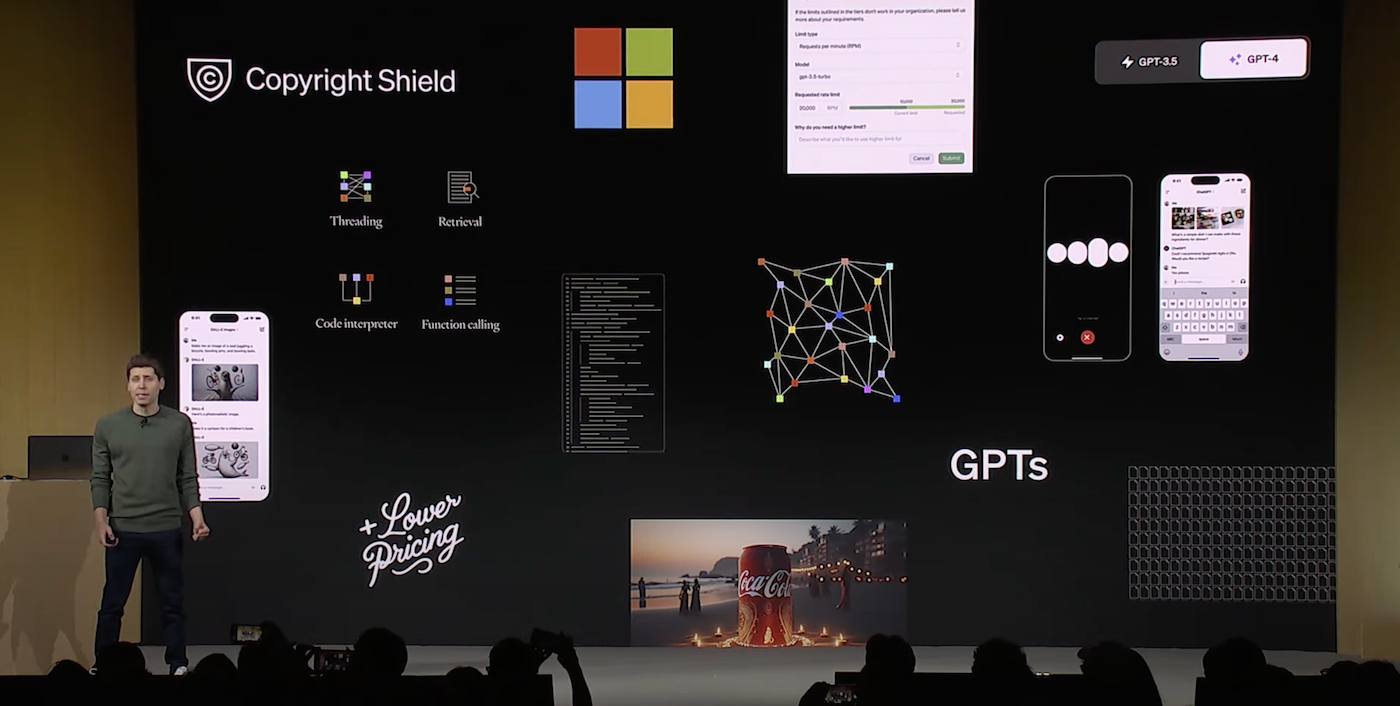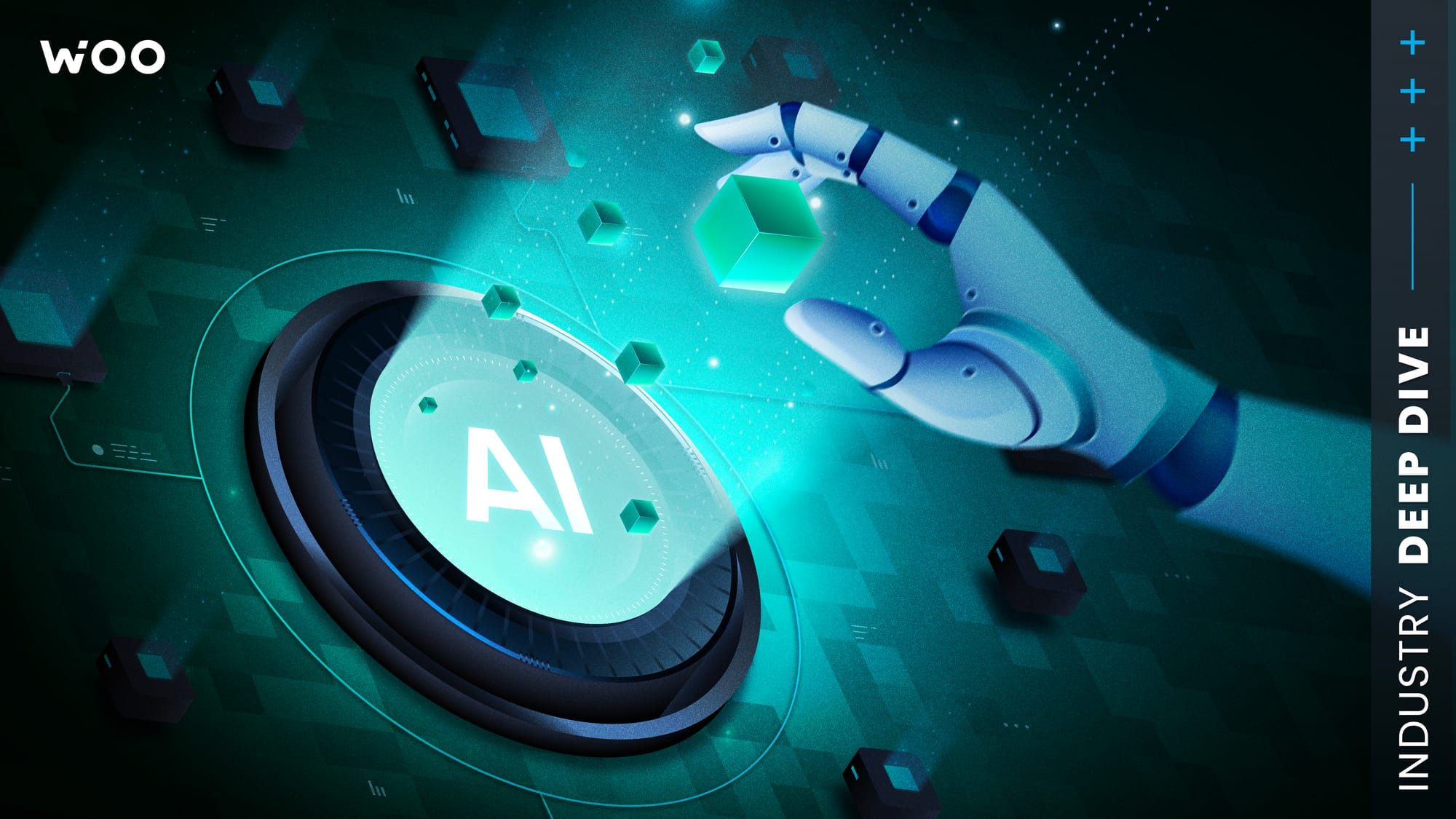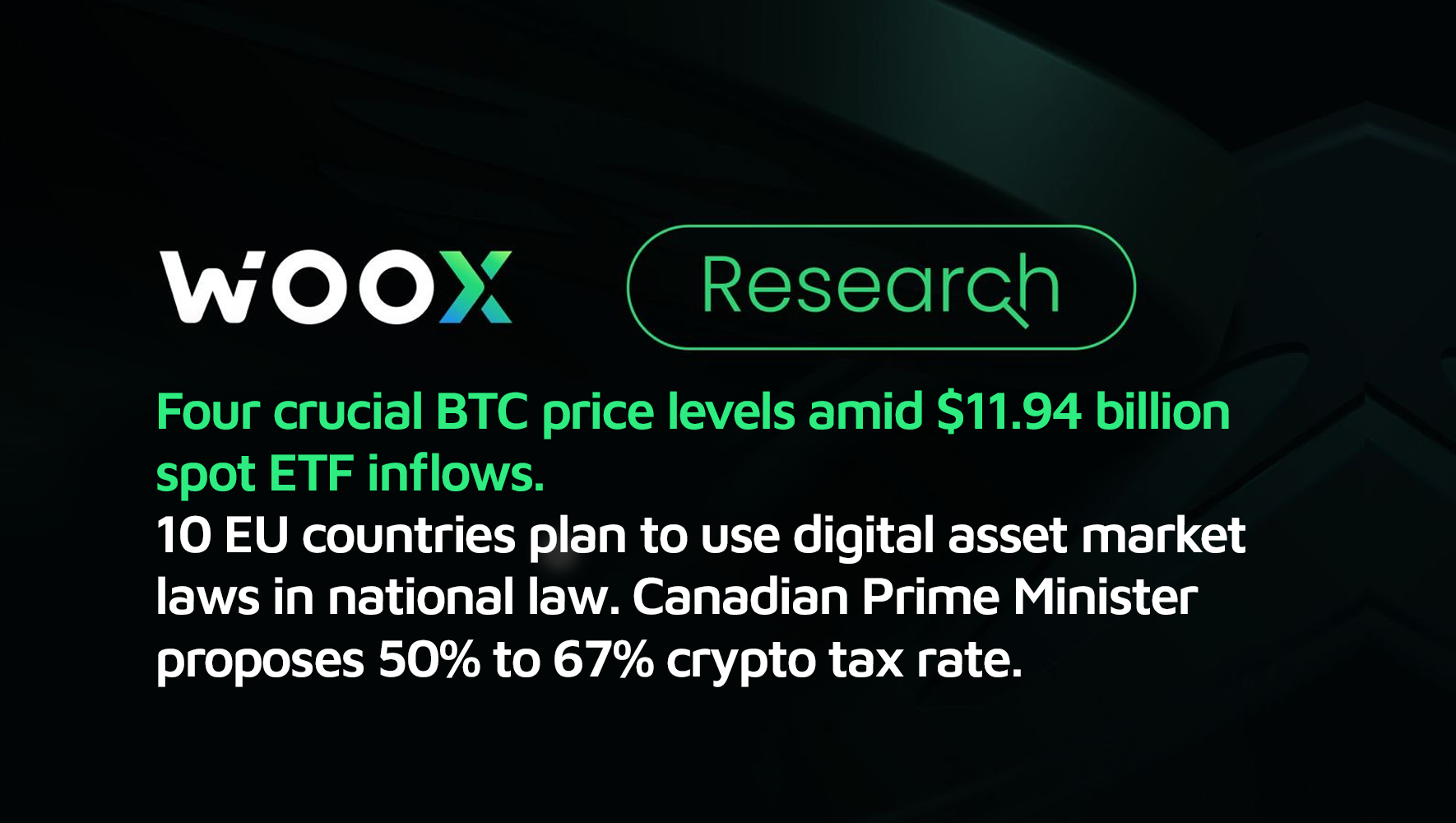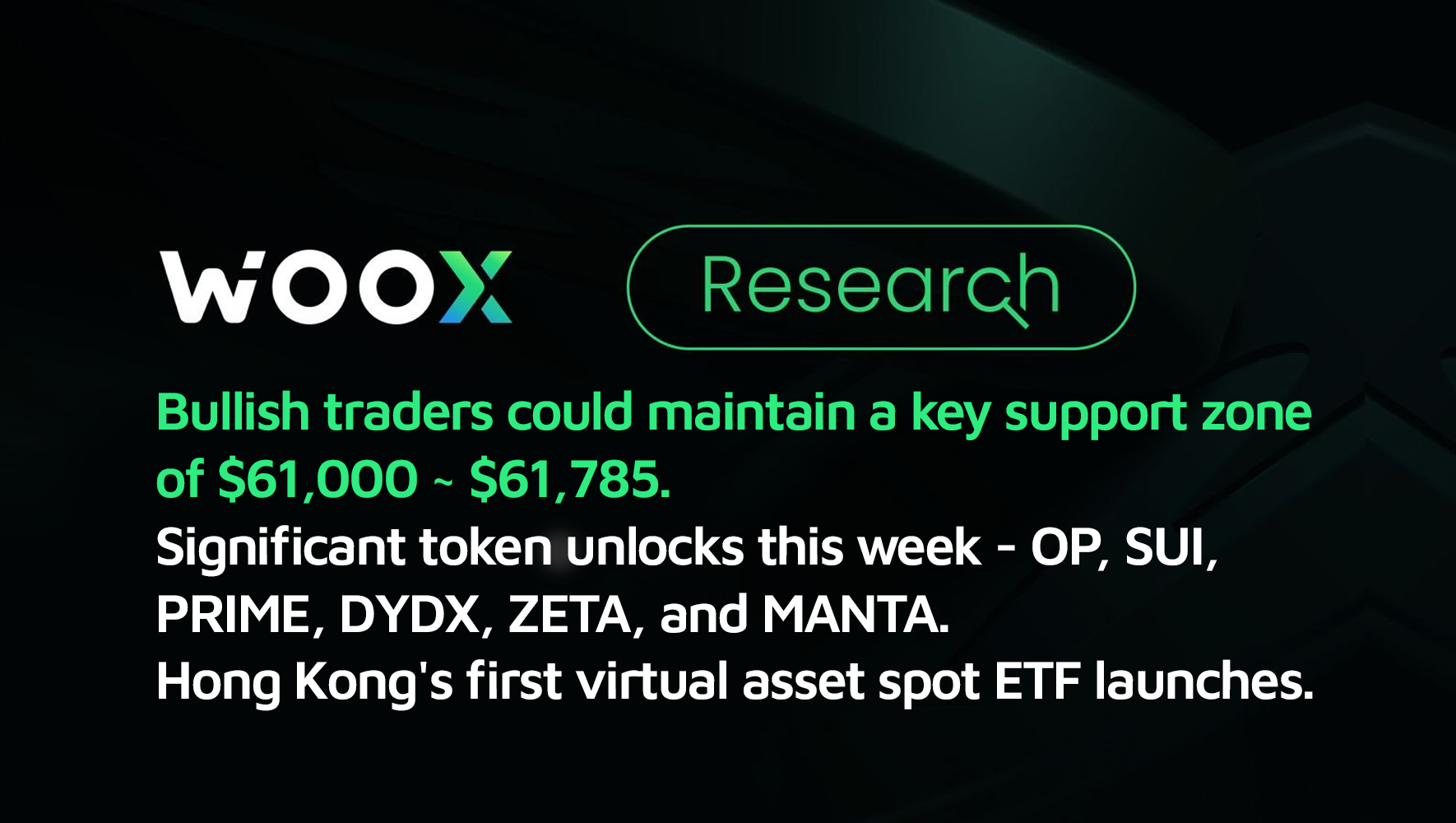The AI space has been abuzz for the past few months post-OpenAI DevDay. Several seismic announcements have rocked the industry. The Web2 giants are in an arms race, and with Sam Altman’s removal (and later, rehire) as OpenAI CEO, X.ai launching Grok, Google announcing Gemini and investing $2b in Anthropic, we’re witnessing strategic moves being made now that will redefine the next chapter in AI.

Blockchain has also come into the AI picture, and speak of a compelling alternative to the clash of titans we are witnessing. But in a world where the likes of Microsoft, Amazon, Google and Nvidia are leveraging their entire corporate arsenal and sizeable chunks of their treasury to build centralized AI supercomputers, what hope do scrappy blockchain startups actually have?
Let’s find out.
Does AI actually need blockchain?
If you've ever perused headlines from Web3 news sources, you might be led to believe that Blockchain and AI are an ideal pairing, each indispensable to the other. However, AI-focused trade publications seem to present AI as thriving well without the need for blockchain. So, what’s going on here?
Let’s break down the business model typically employed for these blockchain AI projects: marketplaces. These open marketplaces aim to facilitate a direct economic connection based on supply and demand between end users, AI developers, and owners of computational resources required to run complex AI models.
This approach is much the same as DeFi: lowering the barriers to entry into an industry, and ensuring more market participants receive fair value for the resources that they provide through decentralization. The issue with this ethos is it’s simply not as efficient as centralization, as AI will always be most performant in a centralized server farm running cutting-edge enterprise hardware.
So, if we can assume this statement to be true, it’s not totally clear if AI needs blockchain at all, or is it?
What can Web3 AI do that Web2 AI cannot?
Privacy
Web2’s centralized approach isn’t optimal for all of AI’s increasingly diverse needs. Privacy, for example, is a huge concern. There’s already significant distrust of how much influence big tech companies have through their massive data collection capacities and blackbox algorithms. Giving them yet more data, and mixing it in a bigger, blacker self-learning box, is rightly concerning.
Through blockchain however, users can maintain complete data and usage privacy. They could run AI workloads over a distributed compute network, meaning no one node has the full picture of what a given workload is for.
Data-shopping
Web 3-based marketplaces also facilitate the open and safe exchange of valuable datasets which AI models require to be trained on.
Dataset providers become economically incentivized to monetize their valuable datasets that would otherwise have remained mostly private in a Web2 world. On the other hand, AI developers who require such datasets get to purchase them with high confidence about the provenance of the datasets, due to zk-based identity verification uniquely enabled by the blockchain.
Ocean ($OCEAN) is one such open-source protocol that does this by allowing businesses and individuals to monetize and exchange their data and data-based services. This is potentially huge for AI as it ensures data owners are fairly compensated for access while maintaining privacy through Compute-to-Data.

Needless to say, this exchange can be completed anonymously in a trustless fashion, while ensuring no one party or platform has complete access to the dataset at any moment in time. Try doing that in Web2.
Flexible pricing
Web3-based marketplaces enable on-demand access to AI computational power on a flexible pricing basis, adjusting dynamically based on the network’s current supply and demand.
In contrast to Web2 cloud platforms like AWS or Microsoft Azure, compute credits are usually sold at a fixed pricing, making it much less cost effective for AI hobbyists running workloads that are less time-sensitive.
Akash ($AKT) is making waves in this space, and is a decentralized cloud computing platform built on the Cosmos blockchain. At a high level, Akash uses idle cloud capacity to provide more efficient and cost-effective cloud computing services than centralized alternatives, claiming to be up to 85% cheaper in some cases.
What’s cool about Akash is that it allows for the deployment of any cloud-native application, meaning it’s a direct competitor to centralized cloud platforms. Better still, it improves on price-performance and scale for decentralized applications and allows businesses to participate in the decentralized cloud computing market.
Monetizing idle computational power
Hardware owners with powerful GPUs also enjoy new avenues to monetization, reducing the overall cost of hardware ownership and decreasing the time to see a positive ROI. Render is blazing a trail in this niche.
Render ($RNDR) addresses the inefficiencies of the current centralized model by distributing complex rendering tasks efficiently across a peer-to-peer network. The issue RNDR might face, however, is one others have faced before it: lack of product-market fit. Golem ($GLM), for instance, launched a similar type of compute marketplace back in 2016, and failed to ever really find significant traction.
There’s a chance Render could go the same way, yet market dynamics and the demand for rendering capabilities have definitely shifted since 2016. Render’s network usage continues to grow, with the network seeing roughly a 10% increase in frames rendered, jobs processed, and RNDR used in Q2 2023, vs Q1 2023.
Render has also recently moved from Ethereum to Solana, seeking to leverage faster transaction speeds and lower costs to deliver more efficiency. With the ongoing boom in generative AI, Render bringing GenAI workloads to the network, and promising trends of increasing network usage, Render may yet succeed where Golem failed.
Monetizing AI research
Marketplaces don’t just work for hardware owners either. Independent AI researchers, for example, could monetize their latest LLMs or other AI models. This could have a knock-on effect to accelerate AI development, incentivizing researchers to move from the academic to market commercialization, and keep the biggest developments from being hidden behind closed academic doors.
Bittensor ($TAO) is driving this concept forward through its peer-to-peer machine intelligence market. This marketplace enables the commoditization of machine intelligence. ML algorithms then become a tradeable commodity with pricing and reward based on the information value provided to other intelligence systems. This unlocks new innovations and use cases like the Neural Internet.
Fighting against a walled-garden approach to AI
If independent developers and researchers now have room to play, this could steer AI away from the walled-garden approach so commonly found in the Web2 space.
The Apple App Store, for instance, is the judge, jury, and executioner of all apps in the store. Users have no say in the matter, and Apple with its bundled services wields huge influence over swathes of the tech industry as a result.

OpenAI seems to be leaning in this direction as well, with the launch of their GPT Store. While this does provide an avenue for avid ChatGPT users to monetize their secret sauce, this also means OpenAI ends up with the same kind of control as Apple.
Resilience of access
As AI emerges to become the internet’s most important tool, depending solely on centralized Web2 services to connect with AI-driven services could be seen as unwise.
Blockchain, adept at addressing this issue, offers notable advantages. Its inherent design significantly reduces the risk of simultaneous crashes across the entire network of servers, ensuring enhanced resilience and more reliable access for users.
Challenges and Considerations
While this all sounds super exciting, the AI+blockchain combo isn’t a done deal.
The elephant in the room is user experience, which Web2 entities do incredibly well. Part of the reason ChatGPT, for example, was so successful was because of how simple the user interface is.
Blockchain projects, on the other hand, are still mostly not user-friendly. Unless the UX challenges are overcome, these blockchain AI projects may fail before they ever really begin. The good thing about this is it just means we’re behind in the race, not out. With market dynamics changing, more talent is poised to enter Web3 than ever before. With that talent will come UX improvement, and this means we may yet close the gap.
On the technical side, AI requires vast amounts of data and computational power to train algorithms. Access to these resources needs to be fast, reliable, and efficient. This can be at odds with blockchain networks' decentralized and sometimes less efficient nature.
Conclusion
The fusion of blockchain and AI is a pivotal moment in the evolution of both technologies.
Blockchain and AI hybrids could move us away from the community value extraction typical of Web2 and towards the community empowerment Web3 strives for.
Of course, there are challenges to overcome, including user experience, technical limitations, and the need for efficient integration.
We believe these challenges are worth overcoming as successful integration could redefine the limits of what’s possible for future generations.
We cannot wait to see what the projects we’ve highlighted in this article achieve on that quest, and how they change this dynamic and ever-evolving field.
Stay tuned because this feels like just the beginning.
The content above is neither a recommendation for investment and trading strategies nor does it constitute an investment offer, solicitation, or recommendation of any product or service. The content is for informational sharing purposes only. Anyone who makes or changes to their investment decision based on the content shall undertake the result or loss by himself/herself.
The content of this document has been translated into different languages and shared throughout different platforms. In case of any discrepancy or inconsistency between different posts caused by mistranslations, the English version on our official website shall prevail.



